Contents
Excel ISTEXT Function
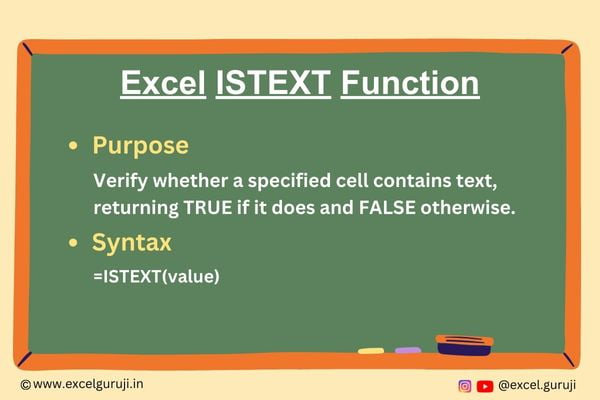
When to Use the Excel ISTEXT Function in Excel
The ISTEXT function in Excel is a powerful tool designed to identify whether a given cell contains text. This function is particularly useful when you want to validate or filter data based on text content, ensuring that you are working with the right type of information in your spreadsheet.
What Excel ISTEXT Function Returns
The Excel ISTEXT function returns a logical value – either TRUE or FALSE. If the specified cell contains text, the function returns TRUE; otherwise, it returns FALSE.
Syntax of Excel ISTEXT Function
The syntax of the Excel ISTEXT function is as follows
=ISTEXT(value)
Input Arguments
Here is the input argument for the Excel ISTEXT function:
● value: The value you want to test for text. This can be a reference to a cell, a range of cells, or a direct text entry enclosed in quotation marks.
Examples of the Excel ISTEXT Function
Here are few examples demonstrating the usage of the ISTEXT function in Excel:
Example 1: Basic Usage
Suppose you have a dataset in column A containing various types of data, and you want to identify which cells contain text values. In column B, use the following formula:
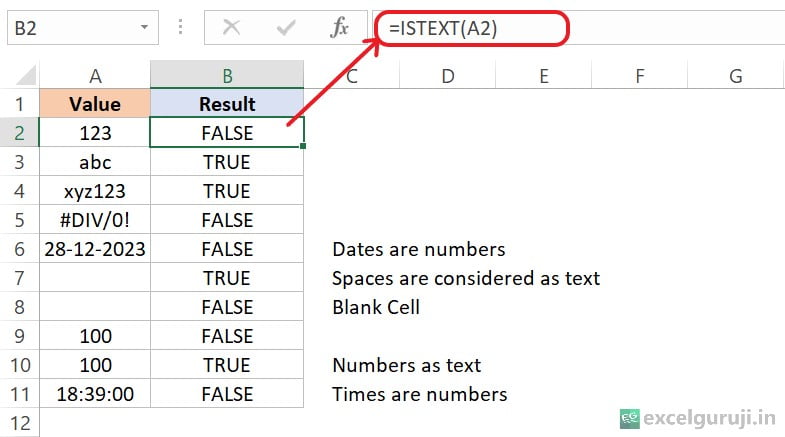
This formula will return TRUE if the value is text and FALSE if it is not.
Example 2: Combining with IF Function
You can also use the ISTEXT function within an IF statement to perform conditional operations based on whether a cell contains text or not. For instance:
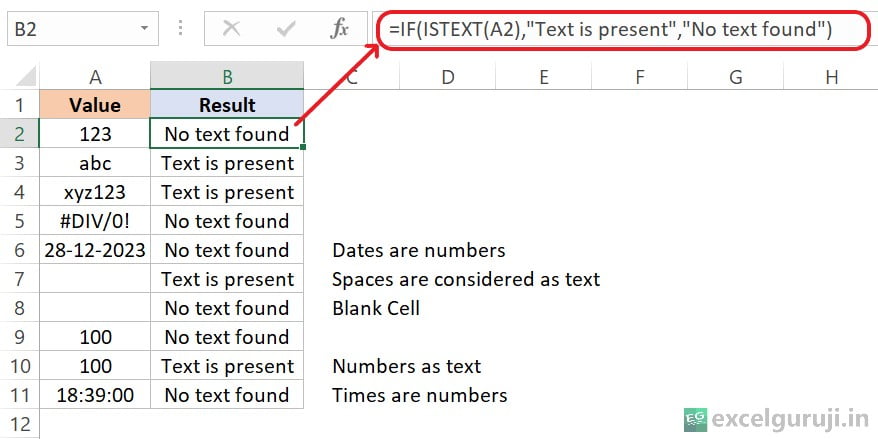
This formula will display “Text is present” if the value in cell A1 is numeric and “No text found” otherwise.
Example 3: Count Cells That Contain Text
The formula =SUMPRODUCT(–ISTEXT(A2:A11)) in Excel is used to count the number of cells within the range A2:A11 that contain text values.
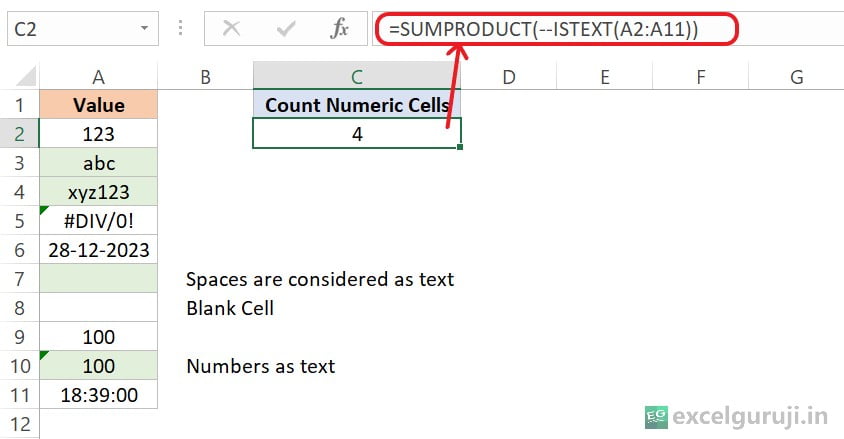
Let’s break down the formula:
- ISTEXT(A2:A11): This part of the formula checks each cell in the range A2:A11 and returns an array of TRUE for cells containing text values and FALSE for cells with non-text values.

- — (double unary operator): This is a conversion operation that turns TRUE into 1 and FALSE into 0. It coerces the TRUE/FALSE array into an array of 1s and 0s.

- SUMPRODUCT: This function then adds up the values in the resulting array. In this context, it effectively counts the number of cells in the specified range that contain text values.
So, the overall purpose of the formula is to provide a count of how many cells in the range A2:A11 contain text values.
Example 4: Applying ISTEXT in Data Validation
Suppose you wish to restrict cells A1 to A10 to accept only text content, preventing the entry of numbers or other non-text data. In such cases, you can utilize the ISTEXT function in data validation, as demonstrated below:
- Select the range A1:A10.
- Go to the Data tab and click on Data Validation.
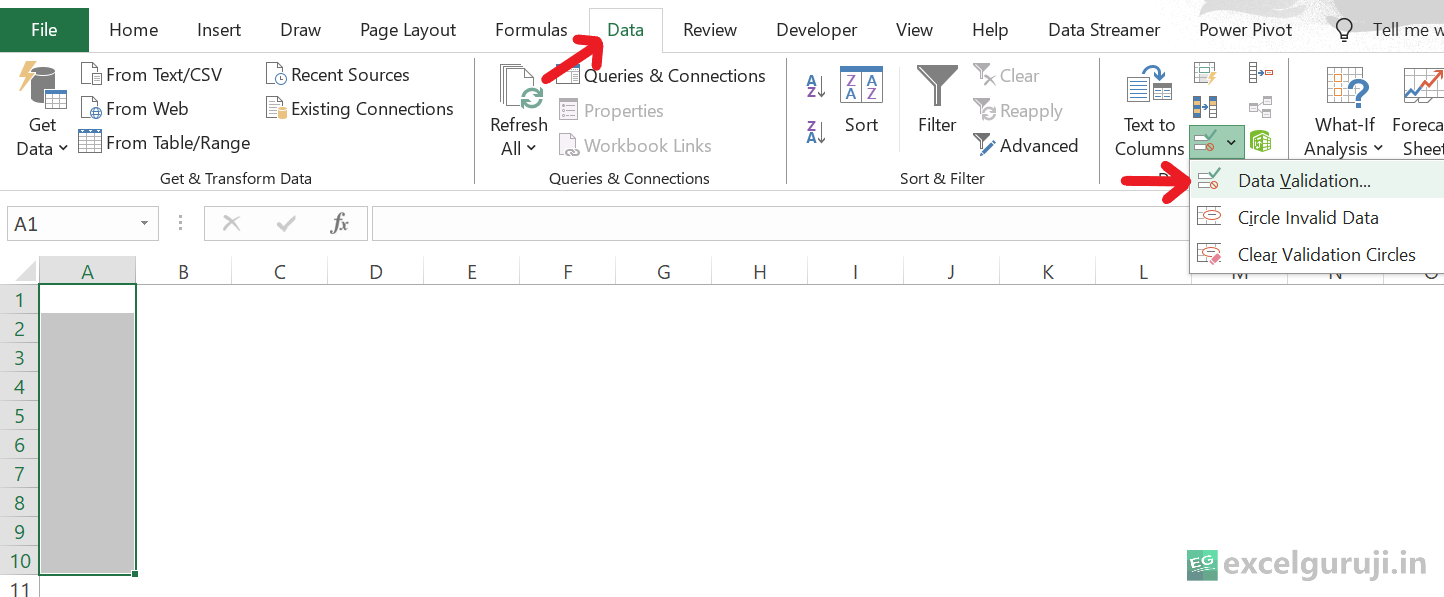
- Choose Custom as the validation criteria.
- Enter the formula: =ISTEXT(A1)
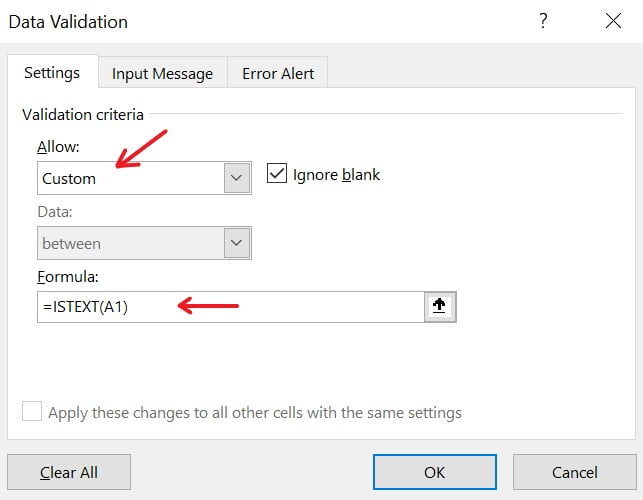
- Now, only cells containing text will be accepted in the selected range. As depicted in the image below, text input is accepted in cell A1; however, when attempting to input a number in cell A2, a restriction message is displayed.
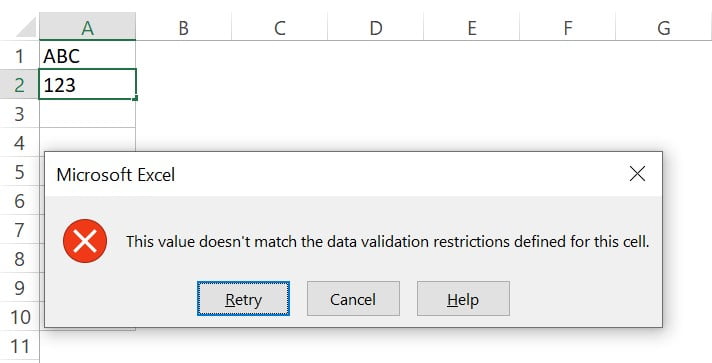
Practice Workbook
There are two sheets in practice file
Download Free Excel File For PracticeConclusion
In conclusion, the Excel ISTEXT function is an invaluable tool for efficiently managing and validating text data within your spreadsheets. Whether you are cleaning up data, creating data validation rules, or building dynamic formulas, ISTEXT can streamline your workflow and enhance your data accuracy.
As with any Excel function, practice is key to mastering its application. Experiment with ISTEXT in various scenarios to gain a deeper understanding of its capabilities and integrate it seamlessly into your Excel projects. Embrace the ISTEXT function today and take your Excel proficiency to new heights!
Frequently Asked Questions (FAQs)
Q1: Can the ISTEXT function identify text within a larger string?
A1: No, the ISTEXT function specifically checks if the entire cell or range contains text. To identify text within a string, other functions like SEARCH or FIND may be used.
Q2: Is the ISTEXT function case-sensitive?
A2: No, the ISTEXT function operates in a case-insensitive manner, treating uppercase and lowercase letters as identical.
Q3: Will ISTEXT return TRUE for cells containing numbers or dates?
A3: No, ISTEXT will return FALSE for cells containing numbers, dates, or other non-text values.
Q4: Can ISTEXT be used in combination with other logical functions?
A4: Yes, ISTEXT can be combined with logical functions like IF to create more complex formulas based on text presence or absence.
Other Related Excel Functions
Mastering Excel ISBLANK Function: A Comprehensive Guide for Efficient Data Analysis
Excel ISERROR Function: A Guide to Mastering Error Detection
Join me on Instagram, YouTube and WhatApp Channel for your daily dose of valuable tips and tricks! Catch insightful videos that will enhance your knowledge and skills. Don’t miss out – follow me now!